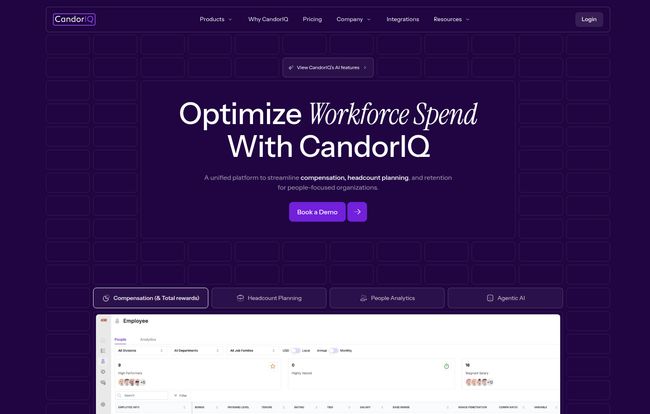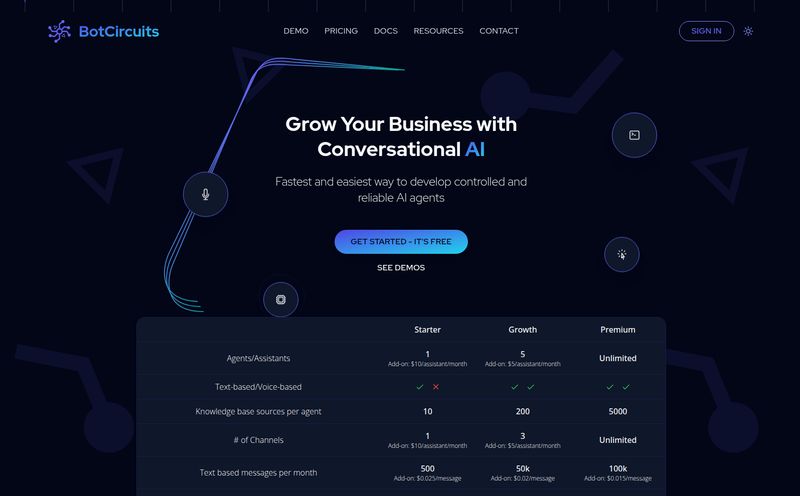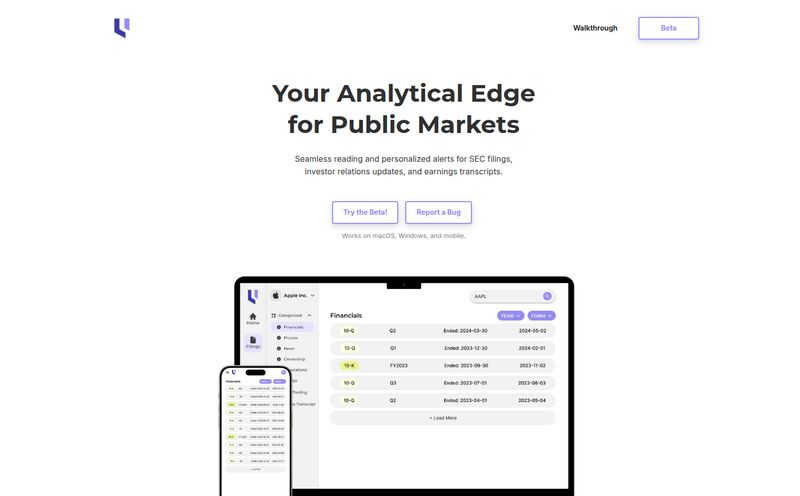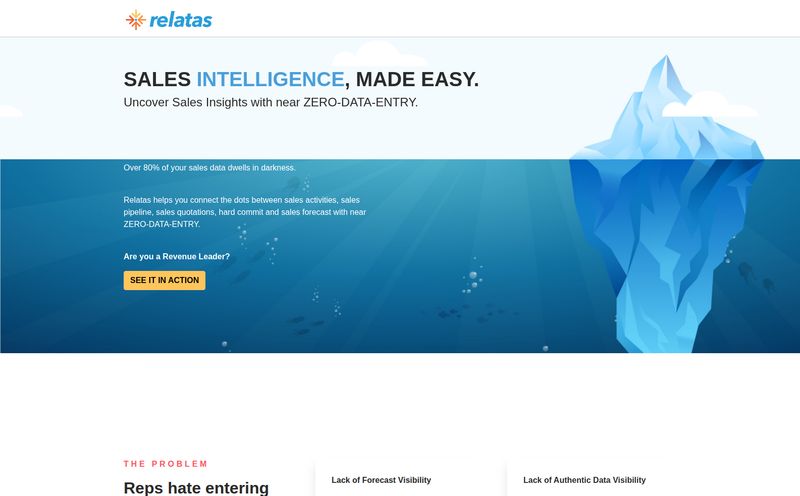If you’ve ever managed a budget or a team, you’ve lived in what I affectionately call “spreadsheet hell.” It’s that special place where VLOOKUPs go to die, version control is a myth, and the finance team’s headcount forecast has a completely different set of numbers than HR’s compensation plan. The classic tug-of-war. It’s a mess.
For years, we’ve just accepted this as the cost of doing business. We stitch together data from our HRIS, our ATS, and some poor finance person’s fever dream of a spreadsheet, and hope for the best. Well, I’ve been looking at a platform that wants to burn that whole playbook to the ground. It's called CandorIQ, and it’s not just another piece of HR software; it’s billing itself as a “People Spend Platform.” A bit jargony, I know, but the idea behind it is actually pretty solid.
So, is it just another shiny object, or could this be the tool that finally gets HR, Finance, and leadership speaking the same language? Let’s get into it.
What Exactly is CandorIQ? Beyond the Buzzwords
The term “People Spend Platform” is their way of saying this: your employees are your company’s biggest and most important investment. So why are you managing that spend with the digital equivalent of duct tape and prayer? CandorIQ’s whole reason for being is to centralize everything related to that spend—from headcount planning and compensation cycles to individual candidate offers and total rewards statements.
Think of it less like a calculator and more like a financial command center for your entire workforce. It’s designed to give you a single source of truth, connecting the dots between how many people you plan to hire, how much you plan to pay them, and what your budget can actually handle. A novel concept, right?
The Core Features That Actually Matter
A features list is just a list. What I care about is what it does. I’ve seen a million platforms that promise the world. CandorIQ seems to focus on a few core areas where the pain is most acute.
Unifying Compensation and Headcount Planning
This is the big one. Traditionally, the Head of People plans the annual merit cycle while the CFO is in another room modeling headcount for the next three quarters. They're related, but the tools they use aren't. CandorIQ brings Compensation Cycle management and Headcount Scenario Planning into the same house. You can build out your pay bands, run your merit cycles, and simultaneously model what happens if you hire 10 new engineers in Q3 or decide to open a new office in Austin. It stops being a guessing game and starts becoming a proper strategy.
From Candidate Offers to Total Rewards
Another area where things get disconnected is the employee experience. You fight to get a top candidate, make a competitive offer, and then they never hear about their compensation again until the next annual review. CandorIQ links the Candidate Offers module directly to its Employee Total Rewards feature.
This means you can create compelling, data-backed offers to win talent. Then, once they’re on board, you can give them a live, transparent view of their entire compensation package—salary, bonus potential, equity value, benefits. I've always felt this is a massive retention tool that most companies just ignore. People who feel valued, and who can actually see their value, are much more likely to stick around.

Visit CandorIQ
The AI Co-pilot for HR and Finance
Okay, “AI” is the buzzword of the decade, and my eyes usually glaze over. But here, it seems practical. The CandorIQ AI Agent isn't here to take anyone's job. It’s a co-pilot. It looks at your internal data and market benchmarks to give you recommendations. Things like, “This team has a high turnover risk due to below-market salaries,” or, “Your proposed headcount for the sales team is 15% over the budget you set.”
Some might argue that relying on an AI for this reduces human oversight. I see it differently. It's a sanity check. It flags things a human might miss in a 10,000-row spreadsheet, allowing leaders to focus their brainpower on the strategic decision, not the number-crunching.
Who Is This Platform Really For?
CandorIQ isn't trying to be for everyone. It’s built for collaboration between departments that are often at odds.
- For People & HR Leaders: Finally, you have one place to manage compensation philosophy. You can ensure pay equity, build compelling rewards statements, and have data-backed conversations with finance instead of just fighting for budget. It’s about making HR a strategic partner, not just a support function.
- For Finance & Executives: Predictability. That's the holy grail. With headcount scenario planning, you can model the financial impact of organizational changes before you make them. You get a clear, real-time view of your biggest line item, which makes forecasting way more accurate. No more end-of-quarter surprises.
The real magic is that it forces these two teams to work from the same dataset. The arguments change from “Your numbers are wrong” to “Should we invest more in engineering or marketing this quarter?” That’s a much better conversation to have.
Let's Talk About the CandorIQ Pricing
Alright, the million-dollar question. Or, hopefully, less. If you go to their pricing page, you won’t see a price. You’ll see four options: Compensation, Headcount, a Full Bundle, and a Benchmarks add-on. And for each one, the call to action is “Contact sales.”
Let's read between the lines. This is an enterprise-grade tool. This isn’t for the 15-person startup trying to get off the ground. The pricing model is designed to grow with your organization, which means it’s tailored to your size, complexity, and which modules you need. My take? You're likely looking at a significant annual investment, but one that you'd measure against the cost of attrition, bad hires, and budget overruns. It's a value proposition, not a cost-per-seat one.
The Good, The Bad, and The Realistic
No tool is perfect. Let's get real about what to expect.
The biggest win here is the unified workflow. Getting compensation and headcount out of separate silos and into one collaborative space is a massive operational improvement. The AI-powered recommendations are a close second, acting as a great guardrail against unintentional bias or simple human error. It truly helps you move from being reactive to proactive.
On the flip side, a powerful platform like this will have a learning curve. This isn't something you turn on Friday and have mastered by Monday. It requires buy-in from multiple departments and a willingness to change old habits (goodbye, trusty spreadsheet!). The price will also be a hurdle for smaller companies, making it a better fit for mid-market and enterprise businesses who feel the pain of complexity most acutely.
My Final Take: Is CandorIQ Worth the Investment?
As someone who has seen countless HR tech platforms, I'm genuinely intrigued by CandorIQ's approach. They're not just selling software; they're selling a new process. They’re tackling a fundamental, cross-functional business problem that almost every scaling company faces.
If your organization is still deep in spreadsheet hell—if your finance and people teams are constantly out of sync, and you lack real confidence in your workforce budget—then CandorIQ is definitely worth a look. It's a strategic investment in getting your single largest expense under control and aligned with your business goals. And in my experience, that’s an investment that almost always pays off.
Frequently Asked Questions
- What is CandorIQ in simple terms?
- It's an all-in-one platform for companies to plan and manage all the costs associated with their employees—like salaries, bonuses, and new hires—so that HR and Finance teams can work together from the same set of data.
- Does CandorIQ replace my existing HRIS like Workday or BambooHR?
- No, it's not meant to be a replacement. It integrates with your existing HR and Finance systems to pull in data. It sits on top of them as a strategic planning layer, rather than handling things like payroll or time off.
- How much does CandorIQ actually cost?
- There's no public pricing. It's a "Contact Sales" model, which means the price is customized based on your company's size, the features you need, and other factors. Expect it to be priced as an enterprise solution.
- Who are the main alternatives to CandorIQ?
- The compensation planning space has gotten competitive. Some other names you might hear are Pave, Compa, and OpenComp. Each has a slightly different focus, with CandorIQ's angle being the tight integration of headcount planning with compensation management.
- Is CandorIQ difficult to set up?
- Given its comprehensive nature and the need to integrate with other systems, you should expect a dedicated implementation process. It’s not a simple plug-and-play tool, and your team will need some time to learn how to make the most of all its features.
Conclusion
Managing people spend is getting more complex, not less. The pressure to attract and retain top talent while keeping budgets in check is immense. Tools like CandorIQ represent a shift away from disconnected, manual processes toward a more integrated, data-driven, and strategic approach. It's about time we had a proper command center for our most important asset, don't you think?



